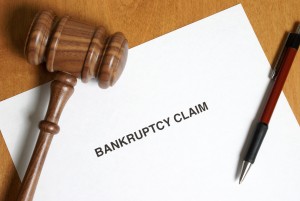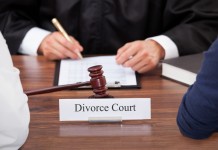
(c) Can Stock Photo
When you hold retirement money in a qualified plan, those assets are protected by the Employee Retirement Income Security Act (ERISA). This is a federal law so no matter in which of the 50 states you reside, your retirement funds are creditor protected. Notably, this protection applied only to ERISA-plan assets—if a retirement plan ias not subject to ERISA, it is not excluded or protected. The most common plans not subject to ERISA (and thus not receiving the ERISA-based protection) are traditional, Roth, SEP, and SIMPLE IRAs, and retirement plans for self-employed business owners (for example, individual 401(k)s) where a failure to have any non-owner “employees” meant that ERISA’s employee-oriented protections would not apply.
Many states that opted out of the federal exemptions have included IRA accounts in their list of state exemptions, thereby providing partial or full (depending on the state’s exact rules) creditor protection for IRAs. But in states that use the federal exemptions or grant creditors the right to choose federal (instead of state) exemptions, IRAs have been troublesome. In other words, the protection of IRA from creditors or in bankruptcy has been a state-by-state issue.
That changed in 2005 because of a Supreme Court decision in a matter involving IRAs plus the passage of the Bankruptcy Abuse Protection and Consumer Protection Act of 2005 (BAPCPA). Let’s look at each of these so you understand the protection you have once you do an IRA rollover from your company plan.
The Supreme Court Case
The case focused on an Arkansas couple, Richard and Betty Jo Rousey, who declared bankruptcy in 2001. They were laid off from their jobs at Northrop Grumman and had rolled over their employer retirement accounts into IRAs after leaving the firm. The Rouseys claimed that the $55,000 in their IRAs should be protected from creditors in the bankruptcy proceedings. The court did not agree. Undeterred, the Rouseys, although bankrupt, somehow had enough cash to take their argument to the Supreme Court. The Supreme Court ruled in their favor, stating that their IRAs were protected from creditors.
The Supreme Court evaluated three basic tests under the Bankruptcy Code:
- “The right to receive the payment must be from a stock bonus, pension, profit sharing, annuity, or similar plan or contract.”
- “The right to receive payment must be ‘on account of illness, disability, death, age, or length of service.’”
- “The right to receive payment may be exempted only ‘to the extent’ that it is ‘reasonably necessary to support’ the account holder or his dependents.
The court held that the first provision was satisfied—IRAs “have the same primary purpose, namely, to enable Americans to save for their retirement” and, like other retirement plans, have a common feature in that “they provide income that substitutes for wages earned as salary or hourly compensation.”
On the second test, the court ruled that the right to receive payment from an IRA is on account of age, referring both to the 10% early withdrawal penalty applicable to IRAs, as well as the age 70 1/2 required minimum distribution rules (and the associated 50% excise penalty for failure to take withdrawals). Since both of these ‘tests’ were satisfied, the Supreme Court ruled in favor of the Rouseys.
The third test was not even presented before the Supreme Court—ultimately, to actually protect their entire account balance the Rouseys will still need to prove how much of the account balance deserves to be protected as reasonably necessary for support. In general, extremely large account balances may still have ‘excess’ amounts subject to creditors, even with the granted IRA protection. So if your IRA funds are not reasonably necessary for your support (i.e. you have plenty of other assets), then don’t rely on this decision. In other words, if you’re not reliant on your IRA assets, this decision won’t help protect your IRA assets. You may in fact have protection under the federal bankruptcy laws or your state’s rules addressed below.
Unfortunately, the protection you have is not always clear. Not all states actually use the federal bankruptcy exemptions. In fact, some states have statelevel bankruptcy exemptions. Consequently, in some states, the states exemptions must be used, in other states individuals have the choice of federal or state exemptions, and only in the remaining states must the federal statutes be used. Consequently, the Supreme Court’s decision will only apply in states where the individual has a choice between state and federal exemptions and chooses the federal exemptions, or in states where the federal rules must apply, such as Alaska, Arkansas, Connecticut, Hawaii, Michigan, Minnesota, New Hampshire, New Jersey, New Mexico, Pennsylvania, Rhode Island, South Dakota, Texas, Vermont, Washington, Wisconsin, and the District of Columbia.
ERISA protection provided to money in a qualified plan (401(k), etc) universally pre-empts state law and always provides creditor protection. It’s also unclear whether the ruling will apply to Roth IRAs, which have far fewer age-based restrictions (since contributions can be withdrawn penalty-free at any time, and no required minimum distributions apply during lifetime). Thus Roth IRAs would not meet the three-prong test evaluated by the Supreme Court.
The protection provided by the Rouseys case is weak, much weaker that protection provided by ERISA level, will only apply in a limited number of states, and will only apply to the extent reasonably necessary for support (which is still determined by the bankruptcy courts on a case-by-case basis). Consequently, decisions to complete IRA rollovers from ERISA-protected retirement plans must still be made carefully. So be aware that when you roll assets from a company plan to an IRA, you may lose creditor protection, so you will check with legal counsel in your state.




[…] is the issue of IRA creditor protection. Should you have financial problems, your IRA may or may not be protected from creditors. It […]
[…] is the issue of IRA creditor protection. Should you have financial problems, your IRA may or may not be protected from creditors. It […]